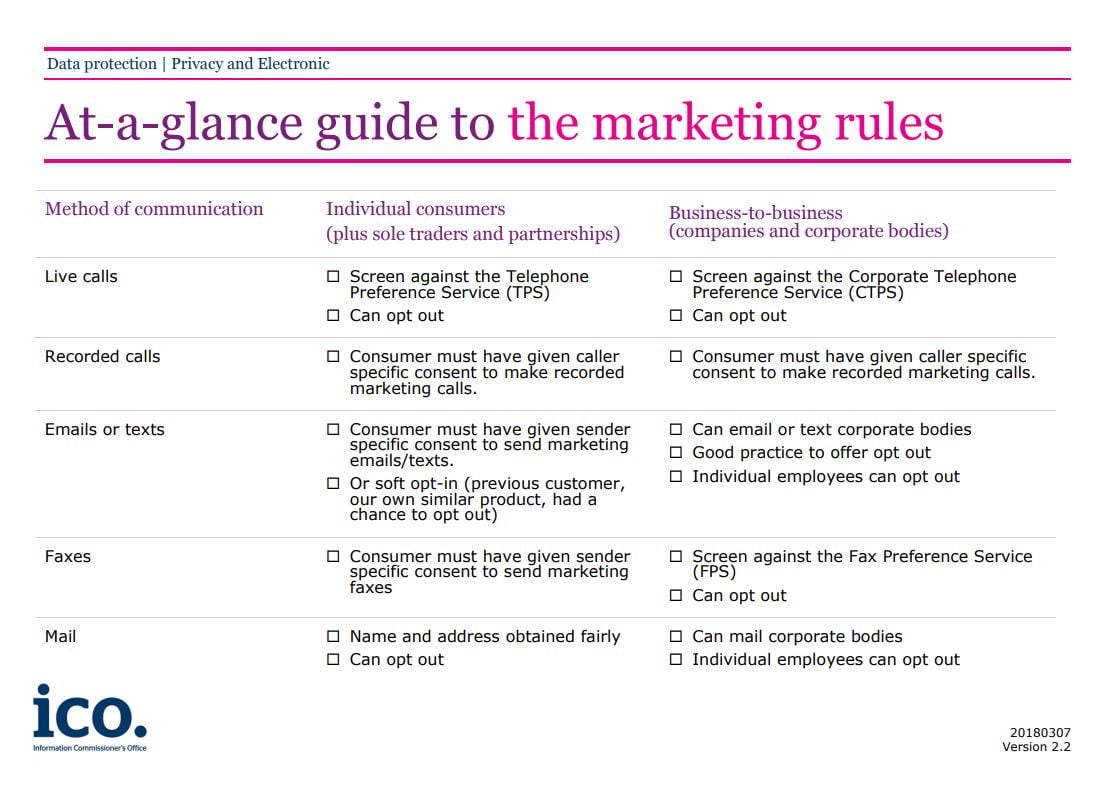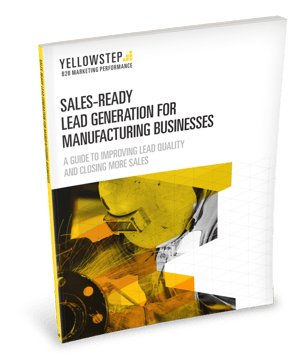Obvious disclaimer: I am not a legal expert, and you should seek to clarify any points I raise with a qualified lawyer before implementing anything based on this blog.
Now that we have that out of the way let me start by saying nearly everything you think you know about GDPR and B2B marketing is wrong.
Understanding GDPR and PECR
General Data Protection Regulation (GDPR) "is a new, European-wide law that replaces the Data Protection Act 1998 in the UK. It places greater obligations on how organisations handle personal data." It came into effect on 25 May 2018, GDPR Day. (Source: ICO)
Alongside GDPR sits the Privacy and Electronic Communications Regulations (PECR) which gives "people specific privacy rights in relation to electronic communications." (Source: ICO)
GDPR regulates the controlling and processing of data, whereas PECR provides greater clarity on with whom and how companies can communicate with individuals.
One of the main topics of confusion in the run-up to GDPR Day surrounded consent. We all received hundreds of emails from companies who were begging us to update our communication preferences otherwise we would be left wondering why they no longer contacted. Funnily enough, no one opted-in, but opted for a cleaner inbox instead.
It wasn't just business-to-consumer companies that were going GDPR crazy. B2B companies were losing their mind as well. I heard stories of HR directors stressing out over not having staff opted-in to receive company communications! People were losing their minds over GDPR.
B2B companies do not need consent for email marketing (but it doesn't hurt to have it)

The information commissioners office helpfully shared an "at a glance guide to the marketing rules" PDF which outlines what the rules are for using different methods of communication when communicating with individuals (including sole traders and partnerships) and businesses (companies and corporate bodies).
According to my layman's interpretation of the rules surrounding consent in B2B marketing, it could not be clearer. The ICO states that when using email as a method of communication in B2B communications, you "can email or text corporate bodies" but it is good practice to offer the opt-out and individual employees can opt-out.
Simple. Make sure your email communications allow users to opt-out, and you should be fine.
Just because you can, it doesn't mean should
Before you hit send on that 10,000 recipients broadcast spammy email... just pause for a second.
No one wants to read generic, sales-focused, spray-and-pray email. Sending out a monthly mailshot with a product focus or very few people read your company newsletter, even those that have opted-in. So what's the solution?
Start building your marketing database organically by offering valuable, relevant content to your audience.
Inbound marketing and GDPR compliance
Many companies have been making the shift to inbound marketing over the past decade, and in a post-GDPR world, it makes absolute sense to do so.
Rather than broadcasting your message or spamming purchased databases of "qualified contacts", the shrewd marketing directors have transitioned toward the inbound marketing methodology that generates REAL qualified leads through blogging, social media and search engine optimisation.

Inbound marketing relies on people seeing enough value in your marketing content to be willing to share their contact details. Whether you're writing incredible industry reports that warrant a form submission, or you regularly create helpful videos to the point that the viewer simply has to pick up the phone and see how you can help their business, inbound marketing is all about the opt-in!
And the best thing about all this is that inbound marketing is extremely effective for manufacturing and engineering businesses!
To learn more about generating sales-ready leads for your manufacturing business, download our free ebook.
Photo by Markus Petritz on Unsplash
 By
By